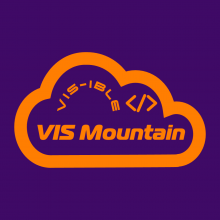Explore Top C development Companies in United States
Use the advanced filter to find companies near you or refine the results Last updated in: December, 2025
VIS Mountain Marketing & Advertising is A Leading Digital Marketing Agency That Caters IT Solutions To Healthcare and Law, and Professional Business.
Services:
No one cares about your online presence... more than we do!
Services:
Cyber Nest, based in Brooklyn NY, USA, is a top software development and implementation firm specializing in custom solutions and advanced technology.
At Zini Technologies, we are dedicated to providing world-class IT solution services that enhance your business's growth, productivity, and safety.
Services:
Best Digital Marketing and Software Services in USA
Services:
Our AI-backed Intelligent Talent Cloud helps you source, vet, match and manage the world's best software developers remotely.
Services:
Reliable IT Partner providing one-stop IT solutions in Dallas, Austin, Fortworth, Houston, and San Antonio
At Digisoft Solution, we pride ourselves on being the best web design and development company in the industry.
Services:
Transform Fast: Your App on iOS & Android Awaits
Liger Technology Solutions is a global BPO and IT services powerhouse committed to delivering unmatched value and expertise to businesses worldwide.
Services:
Designing the future for your upcoming project
Bilions is a global technology solutions company offering full-stack development, cloud services, web, app, and custom software development.
Services:

Chicago, United States Head office in: United States
SeedCart is a full-service eCommerce web development company that leverages remarkable 10+ years of eCommerce development and marketing experience.
Services:
Happy Digital- A web and mobile app development company; developing solutions to propel your business’s growth with.
Deep Learn HQ builds scalable mobile, web, and AI solutions—turning complex problems into seamless, user-focused digital experiences.

CMOLDS | Web and App Development Company in Dubai Verified Company
San Francisco, United States Head office in: United Arab Emirates
CMOLDS is a leading web development company in Dubai offering authentic services in web and app as well a top mobile app development company in Dubai.
SEO Agency, LLC of San Antonio creates custom online brands. Everything a modern business needs to compete in tomorrow's digital landscape.
Services:
Dedicated Software Engineering Teams from Mexico, top A-performers, and competitive pricing. Team Augmentation services for leading companies.
Services:
TOP NEW YORK WEB DESIGN AND DEVELOPMENT Top New York web Design is a leading Website Development Company in New York specializing in Web Development,
Services:

Kissimmee, United States Head office in: Bangladesh
Leading Enterprise Web Hosting Company & Providing the Best IT Solutions in Bangladesh with Latest Server Technology Worldwide.
App Design Glory is a Leading Mobile App and Custom Software Development Solution in the United States.
Filter C development Companies in United States by Cities
Find the right tech company near you or from a specific city. Some of the best companies might be located in smaller cities.
Find more C development companies around the world
TechBehemoths is the world's most advanced and user-friendly platform to match IT Companies with real clients without hustle.
ICT in the United States: General Profile and Insights
The United States has probably the most advanced software and information technology (IT) services industry in the world. More than 40 percent of the $5 trillion global IT market is in North America, primarily the United States. The industry accounts for $2.1 trillion of U.S. value-added GDP (more than 10 percent of the national economy) and 702.276 jobs. According to CompTIA, there are more than 700,000 software and IT services companies in the United States.
The average net salary of a web developer in the US is around $82,532 annually. On the other hand, the hourly rate is nearly $33.47, which makes it one of the best-paid jobs in the world within the IT industry.
Why Should You Work With American Web & Software Development Companies
U.S. software development companies operate in a mature, harmonized market and have a reputation for producing reliable and effective solutions that quickly accelerate to the marketplace. International companies in the industry have shown interest in the U.S. market because of its strong intellectual property rights laws and enforcement. U.S. companies lead the world's packaged and custom-software markets and are competitive in nearly all other market segments with a stable overseas market share.
What You Should Be Aware of When Working With a US-based ICT Company
Having a large IT market has both advantages and disadvantages. While offering a wider variety of US IT companies to choose from is one of the biggest advantages the U.S. has to offer, the challenge for potential clients and partners of the U.S.-based web & IT companies is that the industry development is not equally distributed across all states and cities. For example, many tech companies are relocating to Texas from Silicon Valley. This is why it’s good to have in mind the most important U.S. IT hubs and focus on choosing the most suitable one depending on your needs.
How Reliable are US-based IT Companies
Based on a report delivered by CompTIA in 2020, which is still relevant for 2025, the changes in the global IT market that make competition in this area tougher, U.S. companies will focus more on three development pillars:
- Training and Certification of professionals in their existing tech skills
- Training and Certification of professionals in new tech skills
- Career growth and project management.
This means that the market is saturated with the workforce, and there is a small probability that companies will increase their hiring rate for new professionals. However, intensive and extensive skills development of U.S. tech professionals will increase the capacity and attractiveness of U.S. IT companies and web agencies. Additionally, this will improve the already well-developed abilities to deliver high-end products and services in the IT field.
How Does the US IT Industry Relate to the Neighboring Countries
Considering that the US has probably the most developed IT infrastructure, the industry will keep its position for at least 3 years. On the other hand, the rising numbers of IT companies from Canada and Mexico come in contrast with what US companies have to offer. In other words, clients still have to choose between US companies and neighboring countries as the offers differ in quality and ways of executing projects.
Overall, the US IT industry is in leading positions in different sectors, and combined with an authentic business culture, will probably continue to keep its attractiveness. Although companies from the U.S. are flexible and are always adjusting to market requirements, the global market still remains unpredictable, which may lead to significant changes in the future.
US Tech Industry Outlook for 2025 and Beyond
The US is still leading the world with its cutting-edge technologies, despite some narratives. The expected revenue for the market of IT Services in the US is $563.94 billion by 2025, with a CAGR of 3.73% from 2025-2030, according to Statista. The biggest segment of this segment is IT Outsourcing, reaching $218.02 billion by the same year. This sector has an increased demand for solutions in cloud computing and cybersecurity services.
Artificial Intelligence will influence the tech sector in the US, with only the Generative AI contribution to GDP of $7 trillion in the next 10 years, and it can save up to $1.4 billion for the federal government.
The US is keeping its position in scientific research, graduate education, AI firms, and competitiveness. The US tech sector’s future focuses include AI, increasing cybersecurity & cloud computing.
What is C and what are its benefits for your projects?
C is a high-level programming language with a long and storied history. It was created in the early 1970s and is known for its simplicity, power, and versatility. C has played a foundational role in the development of many other programming languages and is widely used in various software development domains.
There are lots of IT companies that incorporate C programming into their service offerings. These companies often excel in low-level system programming, embedded systems development, and performance-critical applications. Notable examples include IBM, Oracle, and Intel, which utilize C in various aspects of their software and hardware development processes.
C service providers employ a range of development tools and technologies. They may use Integrated Development Environments (IDEs) like GCC and CLANG for C programming. It's essential to distinguish between C and C#: C is a procedural language, while C# (C-sharp) is an object-oriented language developed by Microsoft, primarily for Windows application development.
Several programming languages are closely related to C, including:
1. C++: An extension of C that adds object-oriented programming features.
2. Objective-C: Commonly used for macOS and iOS application development.
3. Rust: Known for memory safety and system-level programming.
4. Go (Golang): Developed by Google, suitable for systems and web programming.
5. Assembly Language: Provides low-level control over computer hardware.
Selecting the right IT company that leverages C for your project involves considering factors such as the company's expertise in C development, previous projects, client references, and industry focus. Assess their capability to deliver efficient, reliable, and secure solutions tailored to your specific requirements.
C programming is essential for various types of projects, including:
1. Operating Systems Development: Building the core components of operating systems.
2. Embedded Systems: Developing software for devices like smartphones, IoT devices, and automotive systems.
3. Game Development: Designing game engines and graphics libraries.
4. Compilers and Interpreters: Creating programming language compilers and interpreters.
5. Real-time Systems: Building software for applications requiring precise timing, such as robotics and aerospace.
6. Networking and Protocol Development: Implementing network protocols and communication software.
7. High-Performance Computing: Developing scientific and engineering applications that demand speed and efficiency.




















